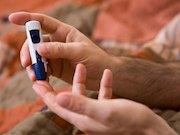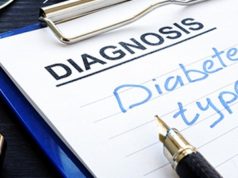CGM reduces HbA1c, hypoglycemia events for patients with suboptimal control compared to control
FRIDAY, April 13, 2018 (HealthDay News) — For adults with type 1 diabetes (T1D) with suboptimal control despite using multiple insulin injections, continuous glucose monitoring (CGM) seems cost-effective, with improved glucose control, according to a study published online April 12 in Diabetes Care.
Wen Wan, Ph.D., from the University of Chicago, and colleagues randomized 158 patients with T1D and hemoglobin A1c (HbA1c) ≥7.5 percent in a 2:1 ratio to CGM versus control. Within-trial and lifetime cost-effectiveness were analyzed.
The researchers found that the CGM group had similar quality-adjusted life years (QALYs) to the control group within the six-month trial (0.462 ± 0.05 versus 0.455 ± 0.06 years; P = 0.61). The total six-month costs were $11,032 and $7,236 for CGM and controls, respectively. Compared with the control group, the CGM group had reductions in HbA1c (0.60 ± 0.74 percent difference in difference [DiD]; P < 0.01), daily rate of non-severe hypoglycemia events (0.07 DiD; P = 0.013), and daily strip use (0.55 ± 1.5 DiD; P = 0.04). CGM was projected to reduce the risk of T1D complications and increase QALYs by 0.54 in the lifetime analysis. For the overall population, the incremental cost-effectiveness ratio (ICER) was $98,108/QALY. The ICER was reduced to $33,459/QALY by extending sensor use from seven to 10 days in a real-world scenario.
“CGM is cost-effective at the willingness-to-pay threshold of $100,000/QALY, with improved glucose control and reductions in non-severe hypoglycemia,” the authors write.
Abstract/Full Text (subscription or payment may be required)
Copyright © 2018 HealthDay. All rights reserved.








